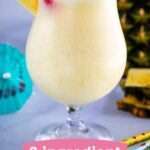What Is An Oni? These fearsome creatures of Japanese folklore, often depicted with horns and fierce expressions, are much more than just simple demons. WHAT.EDU.VN delves into the fascinating world of Oni, exploring their origins, variations, and cultural significance, providing a comprehensive guide to these iconic figures. This information will help you understand Japanese mythology and demonology.
1. Decoding the Oni: An Introduction to Japanese Demons
The Oni, a prominent figure in Japanese folklore, is often described as a demon or ogre with sharp claws, wild hair, and horns sprouting from its head. These creatures are typically portrayed as malevolent beings, bringing misfortune and chaos to the human world. However, their role and characteristics are far more nuanced and complex than a simple “bad guy” archetype.
Oni are a staple in Japanese art, literature, and theater. They are often featured in traditional festivals, where people dress up as Oni and parade through the streets. Their image is used in amulets and charms to ward off evil and bring good luck. In modern times, Oni have found their way into popular culture, appearing in anime, manga, video games, and movies. Understanding the Oni provides insight into Japanese culture and spiritual beliefs. If you’re curious about Japanese folklore or have questions about Oni, WHAT.EDU.VN is here to provide answers.
2. Oni Origins: Tracing the Roots of the Japanese Demon
The exact origins of the Oni are shrouded in mystery, but their roots can be traced back to ancient Japanese beliefs and traditions. Several theories attempt to explain their emergence:
- Foreign Influences: Some scholars believe that the concept of Oni was influenced by foreign cultures, particularly Chinese and Indian mythology. The introduction of Buddhism to Japan may have also played a role, with early depictions of hellish beings resembling Oni.
- Indigenous Spirits: Another theory suggests that Oni evolved from indigenous Japanese spirits and deities. These spirits, known as kami, could be both benevolent and malevolent, and it is possible that the Oni emerged as a personification of the darker aspects of the natural world.
- Transformation of Humans: Folk tales often describe Oni as transformed humans, suggesting that they represent the darker side of human nature. These stories often depict individuals who, through extreme anger, greed, or wickedness, become Oni.
3. Physical Traits: Identifying the Classic Oni Features
While the appearance of Oni can vary depending on the story and region, certain characteristics are commonly associated with them:
- Horns: Perhaps the most iconic feature of the Oni is their horns, which can range in size and shape from small bumps to large, elaborate antlers.
- Sharp Teeth and Claws: Oni are typically depicted with sharp teeth and claws, emphasizing their predatory nature.
- Wild Hair: Their hair is often wild and unkempt, further adding to their fearsome appearance.
- Vibrant Skin Color: Oni skin color is diverse, ranging from red and blue to green and black. The color may be symbolic, with red representing anger and blue representing sadness.
- Minimal Clothing: Oni are usually depicted wearing minimal clothing, such as loincloths or animal skins.
- Iron Club (Kanabo): The kanabo, a spiked iron club, is a common weapon associated with Oni, symbolizing their immense strength.
4. Oni Personality and Behavior: Understanding Their Motives
Oni are not simply mindless monsters; they often possess distinct personalities and motivations. Some common traits include:
- Brutality: Oni are known for their brutal and violent nature, often engaging in acts of destruction and mayhem.
- Greed: Many Oni are motivated by greed, hoarding treasure and seeking to dominate others.
- Deception: Oni are often depicted as cunning and deceptive, tricking humans and leading them astray.
- Protectiveness: In some regional folklore, Oni are seen as protectors of villages, warding off evil spirits and ensuring the safety of the community.
- Punishment: Oni can also act as enforcers of justice, punishing those who have committed wrongdoings.
5. Types of Oni: Exploring the Diverse Demon Pantheon
The world of Oni is vast and varied, encompassing numerous types and variations, each with its unique characteristics and roles. Here are some of the more prominent types:
5.1. Gaki (餓鬼): The Hungry Ghosts
Gaki are tormented spirits consumed by insatiable hunger. They are often depicted with emaciated bodies and bloated stomachs, constantly seeking sustenance but never finding satisfaction.
5.2. Kijo (鬼女): The Female Demons
Kijo are female Oni, often depicted as vengeful and cruel. They may prey on men, kidnap children, or inflict suffering on those who cross their path.
5.3. Onmoraki (陰魔井): The Shadow Demon
Onmoraki are shadowy demons that lurk in dark and secluded places. They are said to bring misfortune and illness to those who encounter them.
5.4. Otoroshi (オトロシ): The Gate Guardians
Otoroshi are hairy, ape-like Oni that guard temple gates and other sacred spaces. They are believed to ward off evil spirits and protect the area from harm.
5.5. Ushi-Oni (牛鬼): The Cow Demon
Ushi-Oni are grotesque demons with the head of a cow and the body of a spider or other monstrous creature. They are often found near water and are said to be extremely dangerous.
5.6. Yaen (燐): The Twin Demons
Yaen are twin Oni who are masters of stealth and deception. They are often depicted as young men skilled in the ninja arts.
5.7. Zenko (禍野鬼): The Graveyard Guardian
Zenko are powerful Oni that guard graveyards, temples, or mountains during specific hours. They are believed to ward off evil spirits and protect the sacred grounds.
5.8. Gozu (牛頭): The Ox-Headed Demon
Gozu are ox-headed demons often associated with the underworld. They are said to be fierce and powerful guardians of hell.
5.9. Tearai Oni: The Gender-Shifting Demon
Tearai Oni are rare Oni that can change gender at will. They inhabit wooded areas and are difficult to identify due to their varied forms.
5.10. Shura (修羅): The Demonic Warriors
Shura are demonic beings trapped on Earth due to a curse. They are often depicted as warriors engaged in eternal conflict.
5.11. Rokurokubi (轆轤首): The Stretched-Neck Demons
Rokurokubi are humans who can stretch their necks to an extraordinary length at night. While not always considered Oni, their monstrous appearance often associates them with the demonic realm.
5.12. Shinigami (死神): The Death Gods
Shinigami are spirits responsible for guiding souls to the afterlife. While not always depicted as Oni, their association with death and the underworld often links them to the demonic realm.
6. Oni in Culture: Symbolism and Cultural Significance
Oni play a significant role in Japanese culture, representing various concepts and beliefs:
- Evil and Chaos: Oni are often used to symbolize evil, chaos, and the destructive forces of nature.
- Protection and Warding: In some regions, Oni are seen as protectors, warding off evil spirits and ensuring the safety of the community.
- Transformation and Change: The Oni’s ability to transform and shapeshift can symbolize change, adaptation, and the fluidity of identity.
- Punishment and Justice: Oni can represent punishment for wrongdoing, acting as enforcers of justice and maintaining order.
- The Dark Side of Human Nature: Oni can also represent the darker aspects of human nature, such as anger, greed, and violence.
7. Oni Masks: A Window into the Soul of the Demon
Oni masks are an integral part of Japanese culture, used in festivals, theater performances, and religious ceremonies. These masks are typically made of wood or papier-mâché and are often painted with vibrant colors and intricate details.
The masks are not merely decorative; they are believed to embody the spirit of the Oni, allowing the wearer to transform into the demon and channel its power. Different types of Oni masks represent different emotions and characteristics, allowing performers to express a wide range of emotions and intentions.
8. Combating the Oni: Strategies for Defense
While Oni are fearsome creatures, there are ways to defend against them:
- Beans: Throwing roasted soybeans (mamemaki) is a common practice during the Setsubun festival to ward off Oni and bring good luck. The act of throwing beans symbolizes purification and the expulsion of evil.
- Holly and Sardines: Displaying holly branches and sardine heads at the entrance of a home is believed to deter Oni from entering. The prickly holly and pungent smell of sardines are said to be repulsive to the demons.
- Prayer and Rituals: Performing prayers and rituals can invoke the protection of benevolent deities and ward off evil spirits, including Oni.
- Courage and Strength: Standing up to Oni with courage and strength can sometimes deter them. Demonstrating fearlessness can weaken their power.
- Knowledge and Wisdom: Understanding the nature of Oni and their weaknesses can provide valuable insights into how to defend against them.
9. Oni in Modern Media: From Anime to Video Games
Oni have made a significant impact on modern media, appearing in various forms of entertainment:
- Anime and Manga: Oni are frequently featured in anime and manga, often as powerful antagonists or complex anti-heroes.
- Video Games: Many video games incorporate Oni as enemies or playable characters, drawing upon their strength and fearsome appearance.
- Movies: Oni have appeared in numerous Japanese films, ranging from traditional period dramas to modern horror movies.
- Literature: Oni continue to be a popular subject in Japanese literature, inspiring countless stories and novels.
10. Common Questions About Oni Answered
Here are some frequently asked questions about Oni:
| Question | Answer |
|---|---|
| What are Oni in Japanese folklore? | Oni are demons or ogres, often depicted with horns, sharp claws, and wild hair, representing evil or chaos. |
| What do Oni symbolize? | Oni symbolize evil, chaos, protection, transformation, punishment, and the darker aspects of human nature. |
| How can you protect yourself from Oni? | Throwing beans, displaying holly and sardine heads, prayer, courage, and knowledge can help protect against Oni. |
| What are some famous types of Oni? | Gaki, Kijo, Onmoraki, Otoroshi, Ushi-Oni, Zenko, Gozu, Tearai Oni, Shura, Rokurokubi, and Shinigami are some notable types. |
| What is the significance of Oni masks? | Oni masks embody the spirit of the Oni, allowing the wearer to transform and channel its power. They represent different emotions and characteristics. |
| Are Oni always evil? | While often portrayed as evil, some regional folklore depicts Oni as protectors of villages, warding off evil spirits. |
| What is the kanabo? | The kanabo is a spiked iron club commonly associated with Oni, symbolizing their immense strength and brutality. |
| Where can I find Oni in modern media? | Oni are frequently featured in anime, manga, video games, movies, and literature, showcasing their enduring appeal and cultural relevance. |
| What is the Setsubun festival? | Setsubun is a Japanese festival where people throw roasted soybeans (mamemaki) to ward off Oni and bring good luck. |
| What is the role of Shinigami in folklore? | Shinigami are spirits responsible for guiding souls to the afterlife. Although not always depicted as Oni, they are associated with death and the demonic realm. |
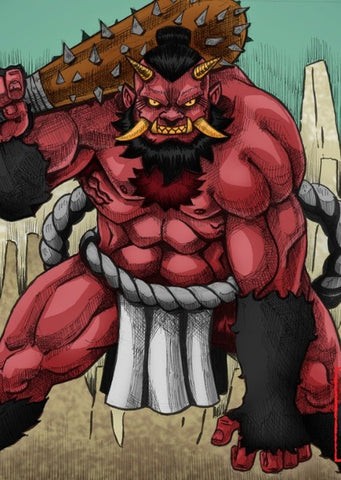
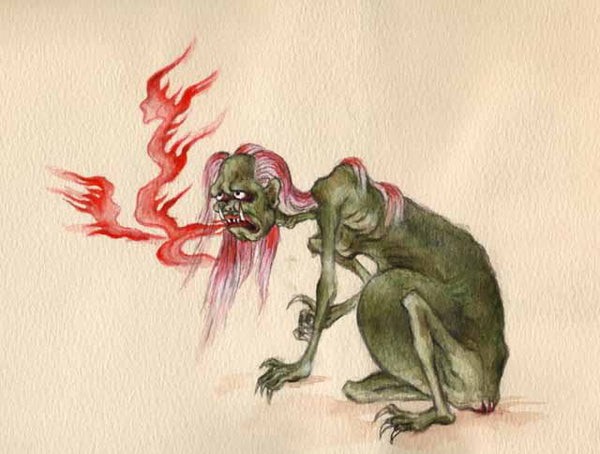
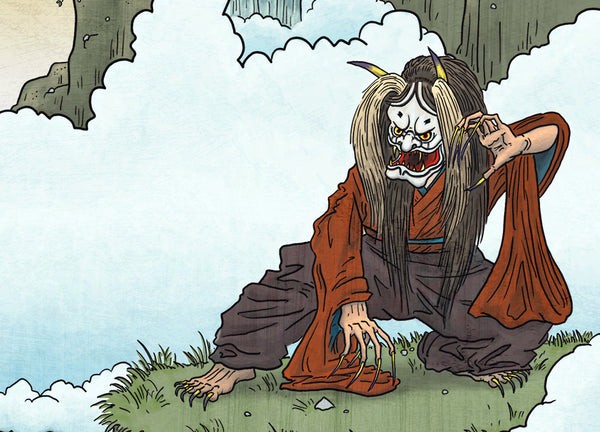
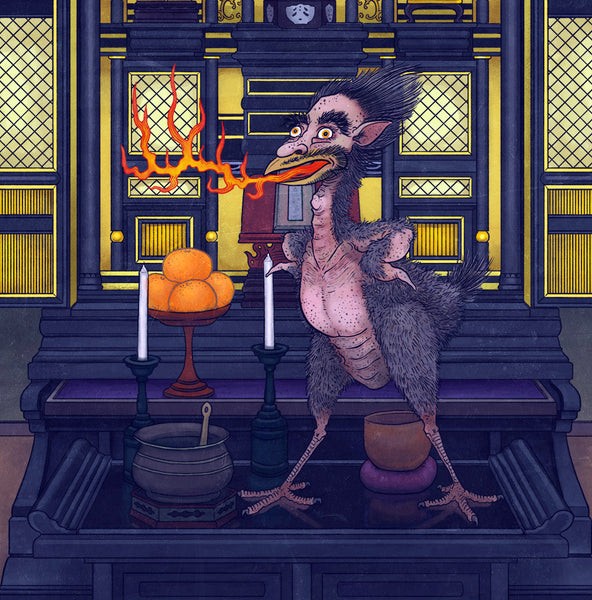
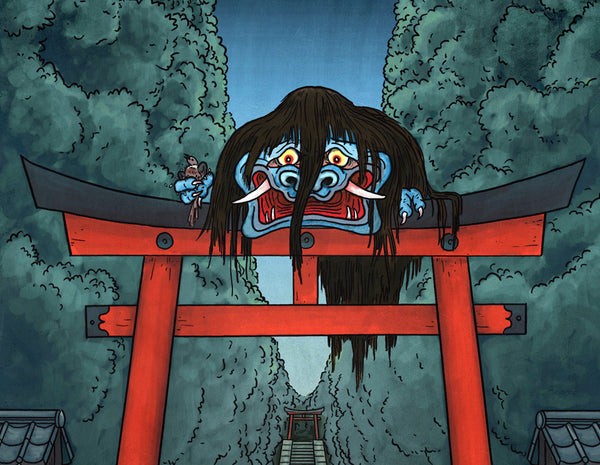

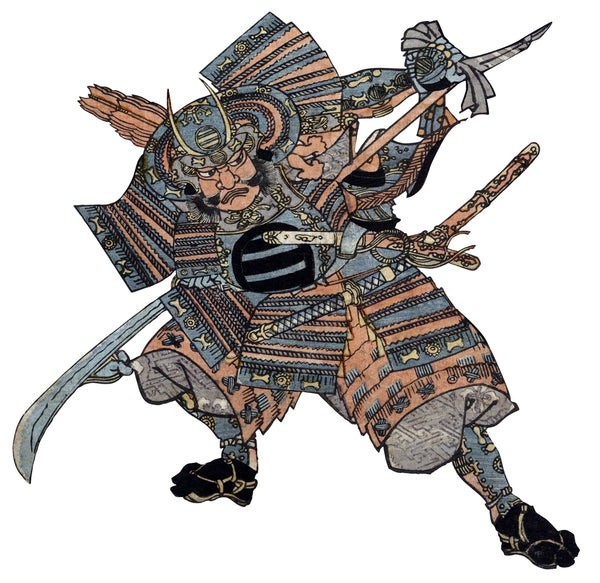
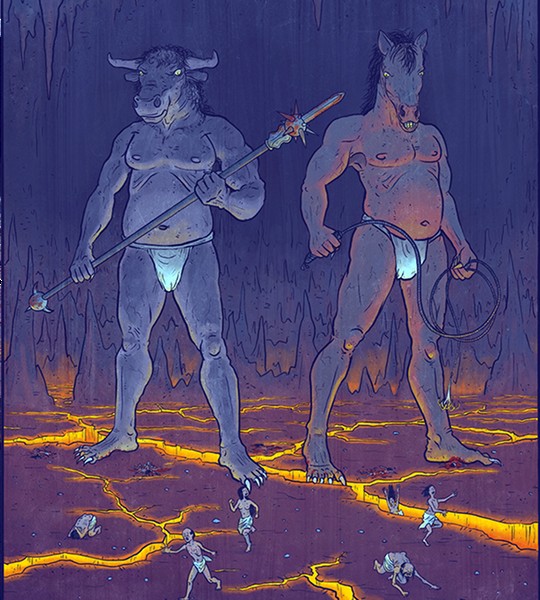
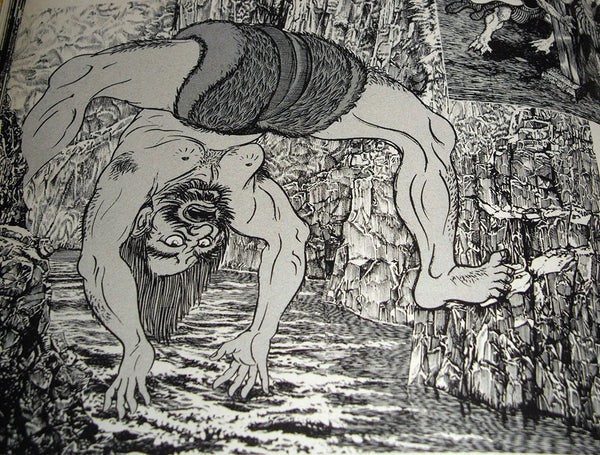
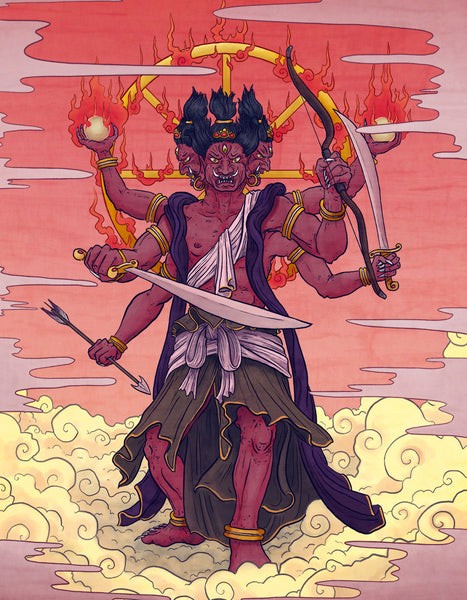
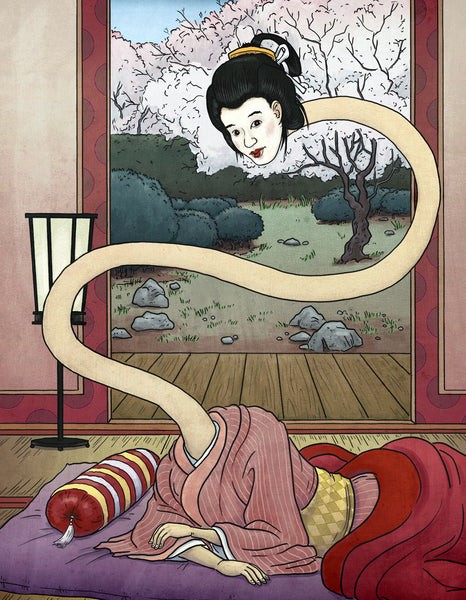

Do you have more questions about Oni or other aspects of Japanese folklore? Visit WHAT.EDU.VN to ask your questions and receive free answers from our community of experts.
Are you fascinated by Japanese mythology and want to learn more? Do you have questions about other mythical creatures or cultural traditions? Don’t hesitate! Visit WHAT.EDU.VN today and ask your questions for free. Our community of experts is ready to provide you with accurate and insightful answers. Contact us at 888 Question City Plaza, Seattle, WA 98101, United States, or reach out via WhatsApp at +1 (206) 555-7890. You can also visit our website at what.edu.vn for more information. We are here to help you explore the wonders of knowledge!
